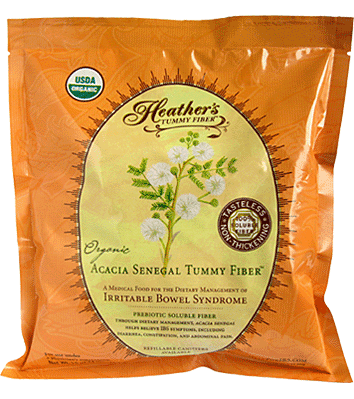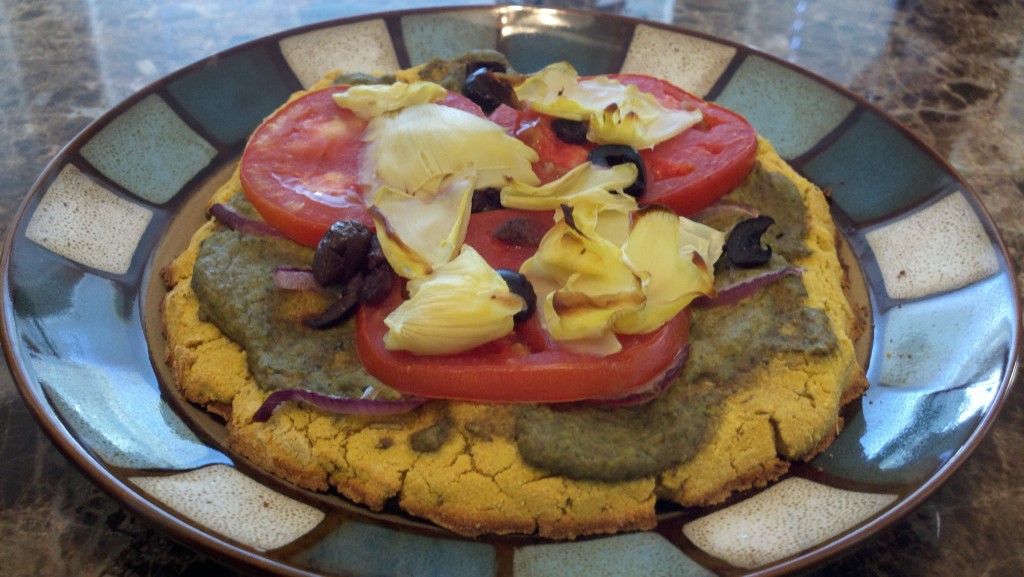Adding onto my post about insoluble fiber and the benefits of soluble fiber, I have thoroughly tested acacia powder – one of the most soluble fiber supplements you can get. Acacia powder is produced from the gum of the Acacia tree (also known as gum arabic) and contains 2.5 grams of soluble fiber per tablespoon. I suggest using Heather’s Tummy Fiber as it seemed to agree more with my gut than the original fiber supplement I took. Plus it has a prebiotic that helps with digestion.
Why did I need to take it? Because my diet lacks bread & grains, the binding of foods was difficult due to all the insoluble fiber I was eating. I originally started with Psyllium Husk only to find out it was too rough for my system. Frantically finding another solution, I had received an email about Acacia fiber from my mother (thank you!) while at the local vitamin store. Amazingly the clerk knew about it but didn’t mention it to me. I cannot stress how important it is to have a good support system and asking for help when you need it.
Here are the doses I took:
– Week 1: Started 1 Tbps in the morning. Felt HORRIBLE after taking it. My penalty for not paying attention to the directions. You need to take it slowly…
– End of Week 1: 1/2 Tsp morning, 1/2 Tsp late afternoon.
– Week 2 – Same dosage as week 1. Felt slightly better and did not have to go to the bathroom as frequently.
– Week 3 – 1 Tsp morning, 1 Tsp in the late afternoon.
– Week 4 – 1 1/2 Tsp morning, 1 1/2 Tsp in the late afternoon.
– Week 5 – 1/2 Tbsp morning, 1/2 Tbsp late afternoon.
– …and so on until my goal is 1 Tbsp morning, 1 Tbsp late afternoon / evening.
It’s important to know that (especially in the beginning) the day I would add more dosage, I would get a flare-up. I would last typically 1-2 days & then subside. As weeks passed I noticed “my stuff” was binding and I would be less inflamed. This, in turn, allowed me to start working out at the pool and take less ibuprofen. And although I wake up 1-2 times a night, I don’t have the urgency to go to the bathroom.
My Goal
While I don’t expect to be off a soluble fiber supplement for awhile, I eventually want to include grains into my diet to replace the acacia fiber without having a flare-up. In order to do that, I will need to take the Cyrex test again to see where I stand with Gluten intra-cellular reactivity.
Until then, I am trying to find alternatives like this butternut squash pizza dough recipe. To make it the least processed, I cut two organic butternut squashes & baked them in a shallow pan with water for an hour (video). Toppings included tomatoes, kalamata olives, artichoke hearts, red onion and healthy pesto from scratch (almond / soy milk for consistency, 2 cups fresh basil, 3 cloves garlic, and 1 cup walnuts and blend together). Over 90% of the ingredients listed were organic.
How Did It Taste? Well, it ain’t no traditional pizza. But for someone who can’t eat it, this is about as healthy of a pizza as you can get. The dough is dry and the pesto doesn’t have enough flavor. The other toppings are great though. If I try this again, I would add more ingredients to the pesto and find a way to make the dough less dry.
How Did I React? Having a pizza this size on it’s own is very filling for my body and I flare up because of it. Going a day without it I notice an improvement in my health. I tried a smaller size (1/3 of what you see in the photo above) along with a meal and still did not feel as good.
Side note: On 11/3 I made a homemade marinara sauce with meatballs & rice – all seems OK. On 11/5 I substituted rice for organic brown rice pasta – got a flare-up. Rice cereal still seems OK, but until my symptoms are well under control, I’ll be skipping the “breads” and “pastas”. It’s just not worth it.



B try mixing the pesto in your dough to give it more flavor and make it less dry Love Pop-O
I can try, but I can’t ever see this being close to traditional pizza. Regardless, I won’t make this for (at least) a few months from now. It’s just not worth making any type of bread / dough.